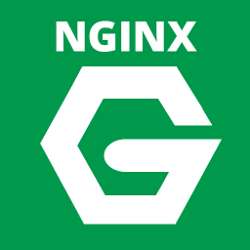
 When you hear “the load balancer”, you should know that it is related to NGINX and it means HTTP and IMAP/POP3 high-performance server. NGINX’s popularity is due to reliability of sites and applications and save money. But that’s not all.
When you hear “the load balancer”, you should know that it is related to NGINX and it means HTTP and IMAP/POP3 high-performance server. NGINX’s popularity is due to reliability of sites and applications and save money. But that’s not all.
The head of Developer Relations at NGINX – Sarah Novotny believes that through this product the associations are permitted to support the openness and dependability of their destinations and applications in the near future and minimize puzzled customers and lost income.
Compared with other products, this open source load balancer gives more improvements and flexible environment of websites and applications. This is highly valued by most of the organizations and there isn’t fear from hardware failure.
Something more, NGINX includes two elements together – web server and ADC (application delivery components, often hardware). Thus the web application delivery is provided by execution and versatility.
Nowadays more organizations use DevOps and micro services tools. Through NGINX you will have optimization flexibility regarding the requirements in different environments – from physical, virtual to cloud.
Other advantages of this load balancer are often updates and innovations. It’s related to nginScript, which use JavaScipt /well known language for most of IT specialist). The balancer has tools like Puppet and Chef. You can save time for maintenance with them.
Use of NGINX is comprehensive. It could be used for handling all the load balancing duties or sitting behind a legacy hardware-based load balancer. The plus for this is easy installation as a private cloud or moving it to a hybrid cloud.
Sarah Novotny said that NGINX acted as a reverse proxy, loaded balancing request to pools of back-end servers. The benefit from this is simple management and the end result of a migration process that starts with another scenario such as introducing of new applications in an environment where a legacy hardware appliance keep on loading of existing applications.
The clients connect straight to NGINX, that offloads SSL, cache static, dynamic content, etc. This shows aims to modern software-based platforms, but it has still kept the old balancers. After inserting of new applications to NGINX, clients can go out the legacy applications from the hardware load balancer to NGINX.
Sarah’s team have experienced scenarios where NGINX sits behind a legacy hardware-based load balancer. It has been preferred due to its corporate structure.
And another advantage of this smaller load balancer NGINX affects application teams. Through NGINX there will be no longer negative impact to all teams. Each application team will have control of its configuration and there is no need from permissions for it.
Special Participation of NGINX as the load balancer in the cloud
Demand determines supply and nowadays more tech organizations use cloud-based infrastructures instead of hardware. Through them application teams have more flexibility and the level of their performance is higher than old hardware.
Another thing is the price. Hardware is expensive and has many management limits, while new products as NGINX give opportunity to add new components easy and cheaply.
NGINX includes two elements together – web server and ADC (application delivery components, often hardware). Thus the web application delivery is provided by execution and versatility.
We can say that NGINX is a fully cloud-native solution. It’s due to its easiness to fit everywhere – from cloud, virtual environments to many other tools.
Other advantage is fastness in running every place, while old hardware puts limits on load balancing.
Also, more organizations use DevOps and micro services tools. Through them you will have faster delivery and options for updates. Furthermore, NGINX could be used by application teams in the whole development process, tracking the delivery and saving money for you.






